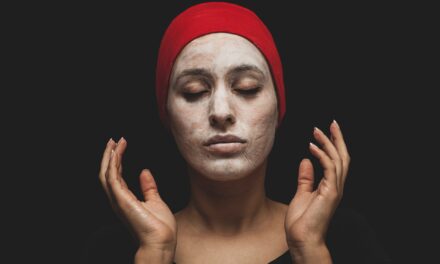
Massage After Exercise: A Holistic Approach to Injury Prevention

You’ve just finished a grueling workout session, feeling the burn in your muscles and the rush of endorphins. But as exhilarating as exercise can be, it also puts a strain on your body, increasing the risk of injuries if not properly managed. That’s where massage therapy comes in—a holistic approach to injury prevention that goes beyond just relieving muscle tension. Let’s dive into the science behind massage after exercise and explore how it can help you recover faster, stay injury-free, and optimize your fitness routine.
Understanding Muscle Recovery and Injury Prevention
Muscle recovery isn’t just about catching your breath and waiting for the soreness to subside—it’s a critical process that allows your muscles to repair and rebuild stronger than before. But with the repetitive stress of exercise, your muscles can become tight, fatigued, and prone to injury if not given the proper care. That’s where massage therapy shines. By targeting specific muscle groups and addressing tension and imbalances, massage can help speed up the recovery process and reduce the risk of injuries, allowing you to stay consistent with your workouts and make steady progress toward your fitness goals.
The Science Behind Massage Therapy for Injury Prevention
Massage therapy isn’t just a feel-good indulgence—it’s grounded in science. When you receive a massage, whether it’s a gentle Swedish massage or a more intense deep tissue treatment, your body undergoes a series of physiological changes that promote healing and recovery. For example, read this guide to massaging lower back. Massage helps increase blood circulation to damaged muscle tissues, delivering essential nutrients and oxygen while flushing out toxins and metabolic waste products. This improved circulation not only accelerates the repair process but also reduces inflammation and soreness, allowing you to bounce back quicker from your workouts.
Benefits of Massage After Exercise
So, what exactly can massage therapy do for you after a workout? For starters, it helps relieve muscle tension and soreness, providing immediate relief and promoting relaxation. By targeting tight muscles and trigger points, massage can prevent muscle strains and sprains, allowing you to push harder in your workouts without worrying about overdoing it. Additionally, massage therapy improves range of motion and flexibility, reducing the risk of injuries caused by muscle imbalances or restricted movement patterns. And let’s not forget about the mental benefits—massage helps reduce stress and anxiety, allowing you to approach your workouts with a clear mind and focused energy.
Incorporating Massage Into Your Fitness Routine
Now that you’re sold on the benefits of post-exercise massage, how do you incorporate it into your fitness routine? The frequency and timing of your massages will depend on your individual needs and preferences. Some people may benefit from a massage immediately after their workout to aid in recovery, while others may prefer to wait until the next day to allow their muscles to cool down. And don’t forget that you can also reap the benefits of self-massage techniques, such as foam rolling or using massage balls, between professional sessions to maintain muscle health and prevent injuries.
Things You Should Do During a Massage
You’ve decided you want to book your first massage. But, if you’re a nervous person, you probably want to know what the setup is going to be before it happens. In particular, you might be worried about what you should be doing during a massage. Well, first of all, remember that a therapist is there to guide you through the process. If you let them know that you’re a beginner, they’ll be happy to explain what will happen and put your mind at ease. Here are some things you should do during a massage to ensure it’s a great experience.
Get Comfortable
First of all, you need to choose a position that’s going to be comfortable for your massage. After all, you’re going to be there for around 60 to 90 minutes. This doesn’t mean that you can’t adjust yourself during the session. But, it’s a good idea to start off in a position you’re comfortable with.
Point Out Tension
Remember that a massage is supposed to help your body relax and unwind. This means that you need to communicate with your therapist and let them know about any tension you’re experiencing. Yes, they can give you a general massage, but it’s also an opportunity to target problem areas. Therefore, don’t be afraid to speak up and talk about any areas of your body that are stiff or experiencing pain. This could be just what you need to receive some relief and improve your condition.
Try to Relax
You might feel nervous about this experience. But, you have to do your best to relax during the session in order to benefit from it. In particular, this is the time you have to clear your mind. Forget about negativity and any anxiety you feel. You should try to concentrate on the movements of the therapist and get the most out of the session. You’ll find that afterwards, you feel invigorated by the experience if you’re able to do this. So, think about tactics you can use to relax. This should be your main focus.
In conclusion, massage therapy offers a holistic approach to injury prevention that can benefit anyone—from weekend warriors to elite athletes. By promoting muscle recovery, reducing the risk of injuries, and enhancing overall well-being, massage therapy allows you to push yourself harder in your workouts and achieve your fitness goals faster and more efficiently.
Feature Photo by Benjamin Wedemeyer on Unsplash



































